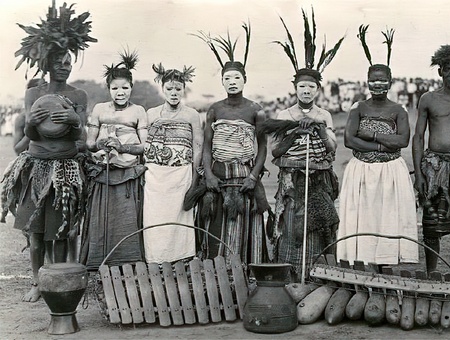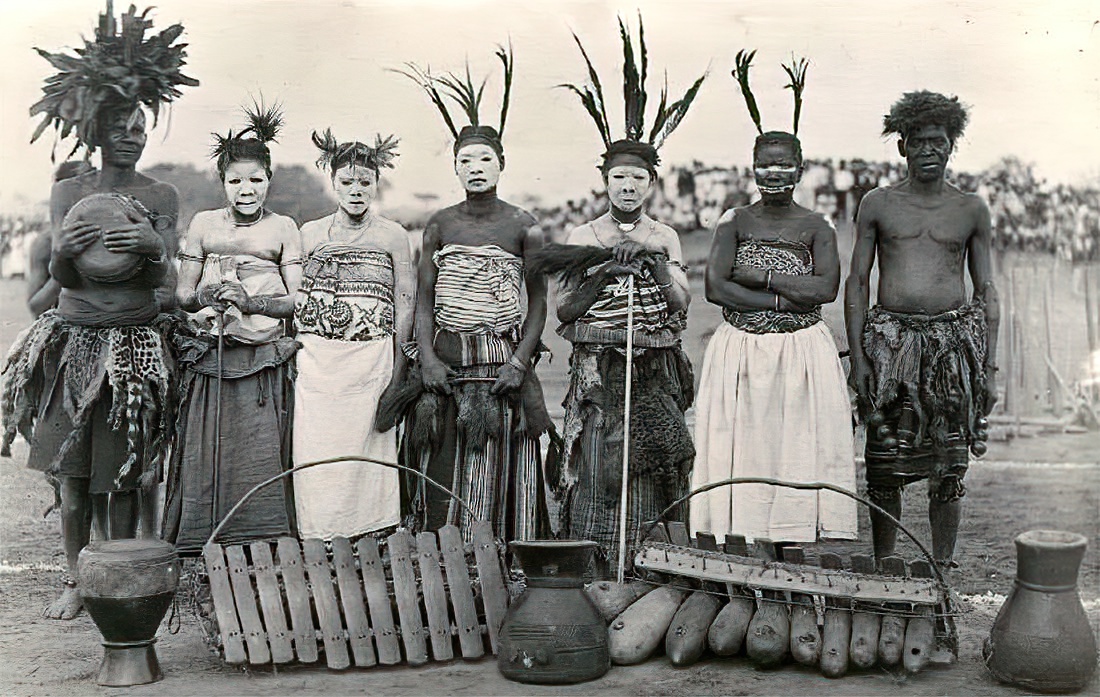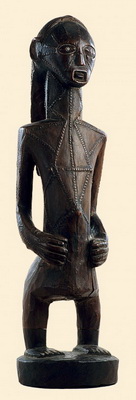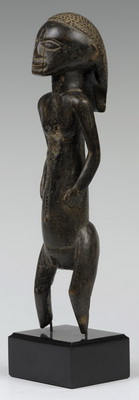

Tabwa, also spelled Taabwa, also called Rungu, a people who live mainly on the southwestern shores of Lake Tanganyika, on the high grassy plateaus of the Marungu massif in extreme southeastern Democratic Republic of Congo. Some also live in northeasternmost Zambia and along the Luapula River. Tabwa speak a Bantu language closely related to those of neighbouring Bemba of Zambia and Luba of Congo.
The Taabwa people are found in the Democratic Republic of Congo and across the border in Zambia, along the western shore of Lake Tanganyika. The Ethnologue describes their location in DRC as follows: Katanga Province, on Lake Tanganyika, south of Moba.
CPPI reports a population of 851,359 for DRC in 1999. Their report for Zambia gives 68,680. Operation World estimates their population at 79,660 in Zambia and 594,940 in DRC. CPPI also separately reports a sub-group called Shila (ROP 108944), but the population for this entity reports again the full population of 68,680 for all Taabwa in Zambia.
For DRC, the Ethnologue reports no new population figure since Barrett 1972 (250,000). For Zambia they report 60,000, with no source or date.
In Zambia 26,500 Taabwa are also reported to speak Bemba as a mother tongue, and these are probably counted as Bemba in most sources.

Tabwa observe matrilineal descent and have several clans and many subclans, each with independent histories, and several with different dialects. Older ethnographic maps represent these as separate “tribes,” and the unity felt in modern times is a product of colonial politics. Locally obtained salt, iron, and smoked river fish were important items of precolonial trade among the Tabwa. These were replaced by European imports. The Tabwa turned to fishing and growing cash crops of potatoes, wheat, and onions for the colonial market; and cassava, corn (maize), and beans for the domestic one. Although the Tabwa produced much food for cities of the Copperbelt during colonial times, the infrastructure of roads, depots, and lake shipping eroded during the 1970s, and their area has become a backwater. Mechanized fishing on Lakes Tanganyika and Mwera is supplemented by Tabwa using lines and nets. Copper is mined in southern Tabwa territory.
Like most ethnic groups in south of the Sahara, the Taabwa speak a Bantu language. The Bantu peoples migrated east, west and south out of CSources report that the Taabwa migrated across the southern Congo-Zaire border in Zambia in the 1700s. Many Bantu migrations were going on in Eastern Africa at this time. Over time in Zambia they intermarried with some of the people groups in the area, primarily Bemba, which affected the form of their speech, leading to the dialect called Shila.

The Taabwa people are a Bantu group with a language similar to the Bemba. The name is spelled Tabwa in some sources. They are also called Tarbwa. In Zambia they are also known as Shila or Sila, which is also the name of a dialect of the language. They are also known by some as Rungu.
The Taabwa Newtwork reports: Because of their lack of education the Tabwa used to have a minority complex, but this is changing. Other tribes interact quite easily with the Tabwa and neighbour relations are good. Only 15% of the population live in the urban areas.
The Ethnologue classifies the Taabwa language in the Bemba Group. It is reported that the Shila dialect is a varation resulting from the heavy borrowing from Bemba after the migration in to Zambia. The Ethnologue, however, reports the Shila dialect is also spoken in the DRC.
Traditionally they were hunters and blacksmiths. Today they live primarily from fishing as well as hunting. They are also involved in agriculture, growing manioc, millet, cassava, beans and maize.
The Taabwa Network reports the following:
Farming is their main source of income and they trade produce with the Haushi and Bemba speaking people. They are a polygamous society and live in groups of 20 people. Shelter consists of little huts made out of mud.
Conflicts are handled by the chiefs or local presidents. An offender either has to pay a fine or suffer a couple of lashes with a hippopotamus tail. The chief of the area normally calls upon the ancestral spirits to bless the land and make the soil fertile.
The Taabwa practice a type of body decoration called scarification. "On the whole surface of the body, a recurrent motif consists of twinned isosceles triangles, the two bases of which symbolize the duality of life. They evoke the coming of the new moon, essential to Tabwa philosophy, whose return would be celebrated monthly." These markings are menat to "embellish the body and recall social values." -- TRIBAL AFRICAN ART -- TABWA
The Taabwa practice a matrilineal inheritance pattern, which determines the chiefs who lead their fairly autonomous villages. Autonomy of the villages has diminished in recent times, one of the results of colonial approaches to administration of the various ethnicities under their dominion.
The Ethnologue reports that the Taabwa in DRC practice three types of religion; in order of dominance: Traditional Religion, Christianity and Islam. In Zambia they report only Traditional Religion. CPPI similarly reports "Ancestor Worship" for the Taabwa in Zambia, thought the entry for DRC reads "Traditional Religion." It is not clear if this is meant to indicate any difference.
The Taabwa Network reports 1% Islam among the people (source SIL), with 39% Christian adherents, with 60% Traditional Religion. In their traditional practices, like other African peoples, the Taabwa honor their ancestors. They carve figurines of them, and have ceremonies of special recognition of the ancestors in the time of the New Moon. The Moon is ritually symbolized by the triangle.
Tabwa carvers produce many beautiful utilitarian objects such as combs, drums, and bellows, but also produce sculpted figures representing ancestors and twin figures. Although a few masks exist in collections, very little is known about them.





Sources: